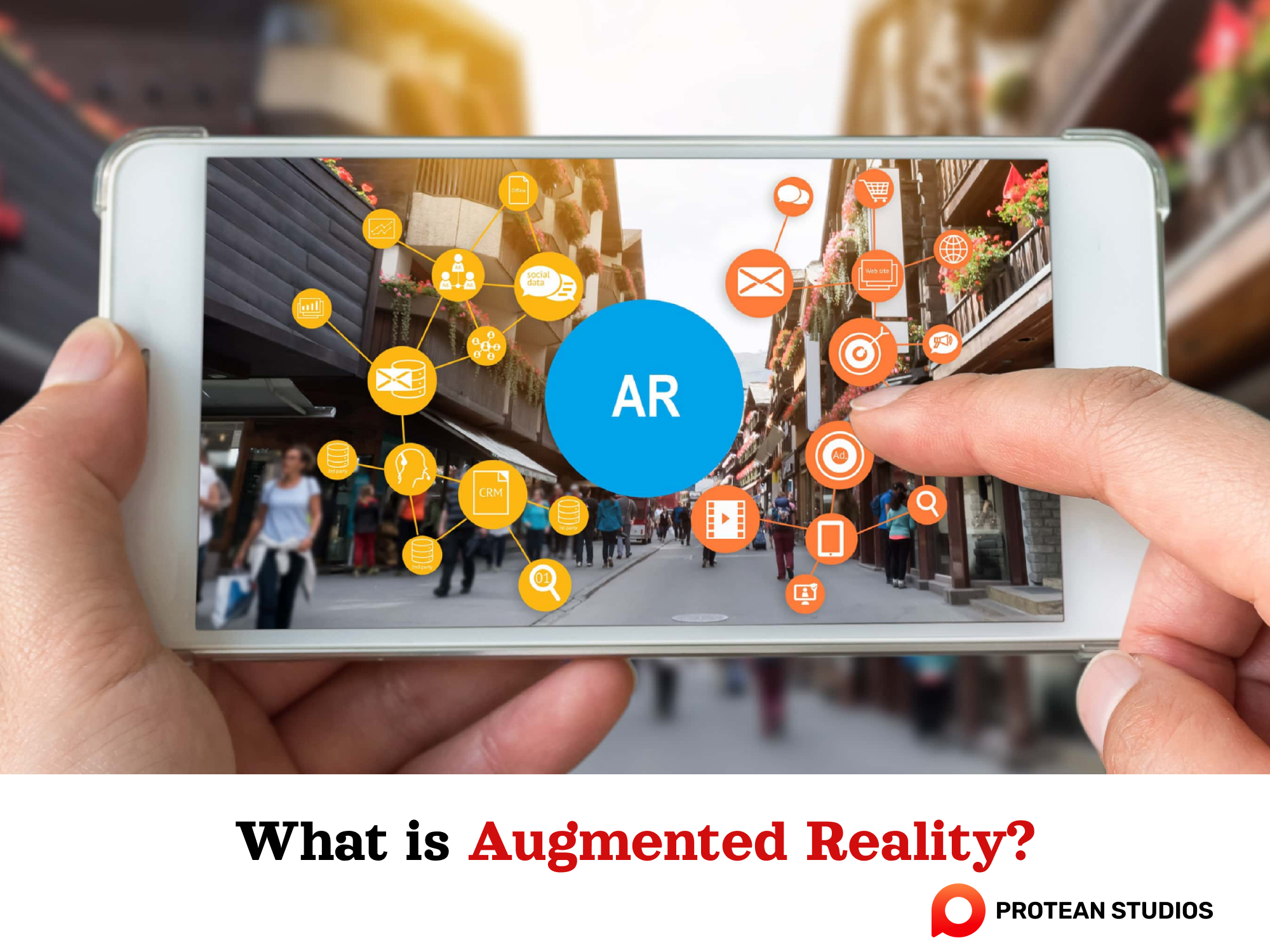Imagine reaching out and picking up a virtual object, feeling its weight and shape in your hand. Or imagine seeing vital information layered onto your real-world environment, enhancing your perception. This is the promise of virtual reality (VR) and augmented reality (AR), technologies transforming the way we interact with the world around us.
Thus, this blog delves into these captivating fields, exploring their core concepts, the challenges of creating realistic grasping interactions, and the exciting possibilities they hold for the future.
Virtual reality
Virtual reality (VR) is a cutting-edge technology that is transforming various industries and experiences.
1. Definition
Virtual reality (VR) is when computer software makes a fake world that feels real. This simulated environment can be anything from a fantastical world to a realistic replica of a real-world location. Users can interact with the virtual environment using special electronic equipment, such as a headset with a screen inside it or gloves fitted with sensors.

2. The pros and cons
VR offers many advantages, including:
Immersion: It can provide an immersive experience, making users feel as if they are present in the simulated environment. This can be used for a variety of purposes, such as gaming, working, education, and training.
Accessibility: VR makes it possible for people to experience things that they would not otherwise be able to, such as traveling to far-off places or visiting historical sites.
Training: VR will create safe and realistic training simulations for a variety of industries, such as healthcare, aviation, and the military.
Education: VR brings immersive learning experiences that can help students better understand complex concepts.
Yet, VR also has some disadvantages, such as:
Price: VR gear can cost a lot.
Health issues: Some people feel sick or dizzy with VR.
Feeling alone: Using VR too much can make you feel cut off from others.
Getting hooked: VR can be addictive, so use it carefully.
Augmented reality
Like VR, AR has the same features, but it has some differences, as follows:
1. Definition
Augmented reality (AR) is a transformative technology that layers computer-generated enhancements atop an existing reality to make it more meaningful through the ability to interact with it. AR is made into apps for phones and tablets. It mixes digital stuff with the real world, making it both better and easier to tell apart.

2. The pros and cons
The advent of AR has brought with it a myriad of benefits, as well as some drawbacks that are worth considering.
Pros
Enhanced Interaction: AR provides users with a unique and enhanced interactive experience by superimposing virtual objects in the real world.
Ease of Access: With AR, information and data are accessible within the context of the user's environment, improving efficiency and learning.
Business Applications: AR has found applications in various business sectors, from retail to real estate, offering immersive experiences and aiding in decision-making processes.
Cons
Privacy Concerns: The need for AR to collect and process data raises privacy issues, as sensitive information might be at risk.
Technical Limitations: Current AR technology may still have limitations about field of view and user experience.
Cost: The development and implementation of AR can be costly, which may limit its accessibility and widespread adoption.
Other Article: A Guide To Protecting Customer Trust When Using Artificial Intelligence
AR vs. VR: What is the difference?
To learn about the differences between AR and VR, you can see a detailed table below.
Feature | Augmented Reality (AR) | Virtual Reality (VR) |
Environment | Real world with added digital elements | Simulated environment |
User Awareness | The user stays aware of what's around them. | The user is immersed in and unaware of their real surroundings. |
Device Access | Can be accessed with smartphones or specialized glasses | It requires a VR headset and extra equipment. |
Focus | Enhances the real world with information or visuals | Creates a new, virtual world. |
Applications | Gaming, education, maintenance and repair guides, navigation | Gaming, entertainment, training simulations, design, and architecture |

Learn more: Unveiling AGI: Exploring The World Of Artificial General Intelligence
The future of AR and VR
The future of AR and VR is brimming with exciting possibilities!
More Natural Interactions: Advancements in gesture recognition, haptic technology (which simulates touch), and voice commands will create more natural and intuitive interactions within VR and AR environments. Imagine feeling the texture of a virtual object in VR or manipulating digital elements in AR with simple hand gestures.
Convergence of AR and VR: The lines between AR and VR may blur as technology progresses. Imagine transitioning from an augmented reality experience where virtual furniture is placed in your room to an immersive VR experience where you can walk around in that same virtual room.
Integration with AI: Artificial intelligence will play a crucial role in personalizing AR and VR experiences. AI can analyze user data to tailor content, create realistic simulations, and even act as virtual companions within VR worlds.
Focus on accessibility: AR and VR technology will become more affordable and accessible, with lighter, more comfortable headsets and even AR glasses integrated into everyday wear. This wider adoption will lead to a surge in innovation and applications across various industries.
The Rise of the Metaverse: VR and AR are seen as key building blocks for the metaverse, a persistent, immersive virtual world where people can work, play, and socialize.
In summary, virtual reality (VR) and augmented reality (AR) are amazing technologies that are changing how we experience things. They make games more real, help us learn better, and even improve how we work. As they get easier to use and more stuff is made for them, they'll become a bigger part of our everyday lives. So get ready for a future where we can explore new worlds and make our real world even cooler with VR and AR!




